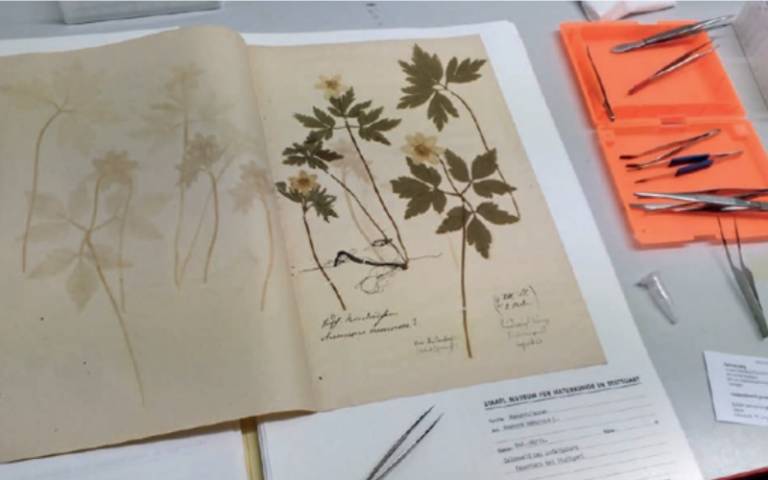Herbarium genomics: a window into plant evolution and diversity
9 October 2023
DNA extracted from herbarium specimens offers unique insights into historical plant communities, their relationships with living organisms and the environment, as well as the genetic transformations that have occurred over time.
A recent publication in the journal Science, featured in a special issue on Ancient DNA, highlights the latest advancements in herbarium genomics. This paper showcases how genomes extracted from herbarium specimens - pressed plant samples - can significantly enhance our understanding of plant evolution, ecology, and biodiversity. Herbarium collections contain a vast array of species from diverse geographical locations that would otherwise be beyond the scope of short- to medium-term research projects. This underscores the vital role of genomes extracted from herbarium specimens as significant contributors to taxonomic studies and macroevolutionary inference.

Time series of herbarium genomes can be instrumental in tracing the evolutionary history of wild plants, including the characterization of recent invasions/colonizations, and constitute a time machine to study recent crop evolution. “Herbarium specimens include crops and provide a unique glimpse into the past few centuries marked by the global movement of staple and cash cropsfor colonial exploitation”, says Dr Rafal Gutaker, from Royal Botanic Gardens, Kew, co-author of the new publication.
The study portrays herbarium specimens as time capsules preserving ecological interactions. This is because a portion of the DNA extracted from the desiccated plant tissue originates from microorganisms, including bacteria and fungi, which inhabited the plant during its lifetime. “Sequencing herbarium genomes not only enables the study of plants but also the examination of their co-evolved commensal and pathogenic microbes. This allows us to trace historical plant epidemics and characterize through time microbial communities in various plant tissues, including leaves and roots”, explains senior author Dr Hernán A. Burbano (UCL Genetics, Evolution & Environment).
The integration of herbarium genomes with other molecular data derived from herbarium collections, such as proteins, isotopes, and chemical compounds, as well as microscopic and macroscopic phenotypic measurements, will provide a comprehensive perspective on plant evolution over time and its responses to selective pressures, such as those arising from global environmental changes.
Further information:
- Link to paper in Science: Ancient DNA genomics and the renaissance of herbaria
- UCL Research Department of Genetics, Evolution and Environment
- Dr Hernán A. Burbano
- Dr Rafal Gutaker
Contact:
- Dr Hernán A. Burbano (h.burbano@ucl.ac.uk)
- Dr Rafal Gutaker (R.Gutaker@kew.org)
 Close
Close

